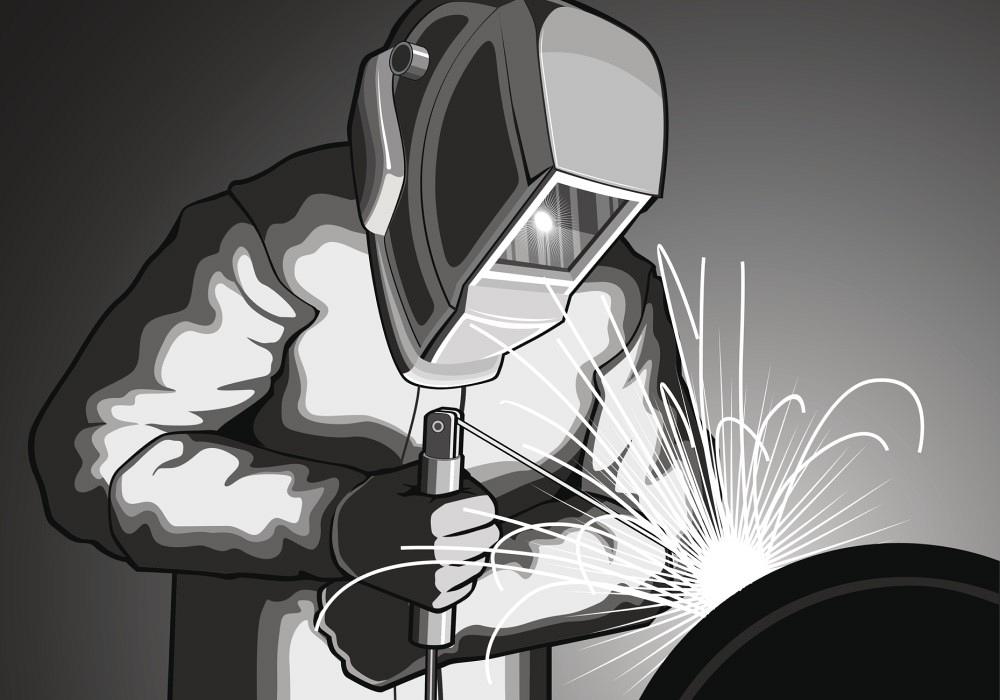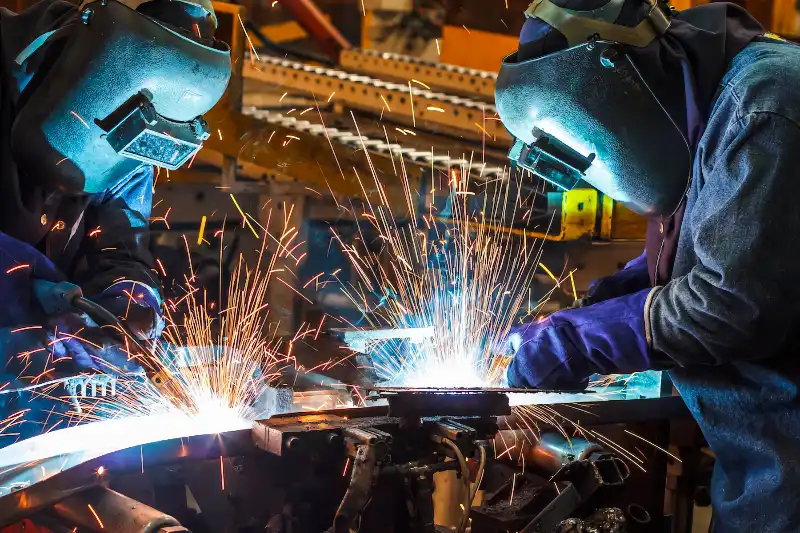Everything about Welding: Trick Insights Into Techniques and Ideal Practices for Success
Welding encompasses a variety of techniques, each suited for specific materials and applications. Comprehending these techniques, such as GMAW, SMAW, and TIG, is essential for accomplishing suitable results. The appropriate devices and safety and security techniques can not be forgotten. As preparation and troubleshooting play crucial functions in the welding process, understanding these components can considerably improve the top quality of the last product. What are the essential variables that ensure an effective weld?
Recognizing Various Welding Methods
Welding methods encompass a variety of methods, each fit to certain applications and materials. Among one of the most common strategies are Gas Metal Arc Welding (GMAW), Protected Metal Arc Welding (SMAW), and Tungsten Inert Gas Welding (TIG) GMAW, additionally understood as MIG welding, is popular for its rate and versatility, making it ideal for thin products. SMAW, or stick welding, is favored for its simplicity and effectiveness in exterior atmospheres, especially with thicker metals. TIG welding supplies accuracy and control, making it ideal for detailed work and non-ferrous metals (Fabrication). Each method has its special advantages and factors to consider, permitting welders to choose the most effective technique based upon the project's demands, product type, and preferred results. Recognizing these techniques is essential for successful welding
Important Welding Tools and Devices
While numerous welding techniques call for certain abilities, the ideal tools and devices are equally crucial for attaining high quality outcomes. Essential welding equipment consists of welding machines, which differ relying on the method-- such as MIG, TIG, or stick welding. Protective equipment, consisting of handwear covers, safety helmets, and aprons, assurances security and comfort throughout the procedure. Furthermore, components and clamps aid secure materials in position, guaranteeing precision in welds. Consumables like welding poles, cord, and protecting gas are likewise vital parts that affect the quality of the weld. Moreover, tools such as grinders and cutters help with surface area prep work and post-weld ending up, adding to an expert end result. Spending in high-grade devices inevitably boosts the performance and effectiveness of welding projects.
Safety And Security Practices in Welding
Correct safety and security methods are vital in the welding sector to safeguard employees from prospective dangers. Welders should put on proper personal protective tools (PPE), including headgears with proper shading, handwear covers, and flame-resistant apparel. Ample ventilation is crucial to reduce exposure to unsafe fumes and gases created throughout the welding process. Additionally, employees ought to be trained in the right handling of welding tools to stop crashes. Fire safety actions, such as maintaining flammable products away from the welding area and having fire extinguishers readily available, are essential. Regular inspections of equipment and offices can aid determine prospective risks prior to they bring about accidents. By sticking to these safety and security techniques, welders can create a more secure working atmosphere and lessen risks linked with their profession.
Preparing Materials for Welding
Preparing products for welding is an important action that substantially influences the high quality and honesty of the end product (Fabrication). Proper prep work includes cleaning up the surface areas to eliminate impurities such as rust, dust, and oil, which can compromise the weld. Techniques such as grinding, sanding, or making use of solvents are generally utilized to achieve a clean surface. Additionally, making certain that the materials mesh snugly is necessary; gaps can lead to weak welds. It's likewise important to take right into account the positioning and positioning of the components, as this will influence the convenience of welding and the final result. Selecting the proper filler material and making certain compatibility with the base metals is important for accomplishing strong, resilient welds.
Tips for Achieving High-Quality Welds
Achieving premium welds needs interest to detail and adherence to best techniques throughout the welding process. Correct joint preparation is important, ensuring surfaces are complimentary and tidy from impurities. Choosing the suitable filler material and welding method based on the base metals is vital for ideal bonding. Maintaining consistent travel speed and angle while welding can promote and avoid defects uniformity. Additionally, regulating warmth input is necessary; extreme warmth can cause warping and compromised joints. Routinely checking the welds during the procedure enables for prompt modifications if necessary. Using ideal post-weld treatments, such as cleansing and tension relief, can enhance the resilience and honesty of the weld, ultimately making certain a successful end result.
Troubleshooting Usual Welding Issues
Welding often offers obstacles that can influence the high quality and stability of the end product. Common issues such as porosity, irregular weld beads, and overheating can develop, each needing specific fixing techniques. Understanding these troubles is important for welders to improve their skills and attain ideal outcomes.
Porosity Problems Clarified
Although porosity can often be forgotten, it remains a critical concern in welding that can compromise the stability of an ended up product. Porosity describes the visibility of little gas pockets within the weld grain, which can weaken the joint and lead to early failure. This issue normally occurs from impurities, dampness, or improper protecting gas protection throughout the welding process. To alleviate porosity, welders should validate that the base materials are clean and dry, utilize proper protecting gases, and preserve consistent welding specifications. On a regular basis examining the devices and setting can additionally help determine potential issues prior to they materialize in the weld. Addressing porosity effectively is important visit this web-site for attaining solid, long lasting welds that satisfy quality requirements.

Irregular Weld Beads
Irregular weld beads can considerably impact the quality and toughness of an ended up product. Different variables add to this problem, including improper travel rate, incorrect amperage settings, and inconsistent electrode angles. When the welder relocates also quickly, a grain might show up narrow and lack infiltration, while moving also slowly can cause extreme buildup. Furthermore, making use of the wrong amperage can lead to either damaging or too much spatter, both of which concession weld honesty. The welder's technique, such as inconsistent lantern activity, can likewise result in unequal bead look. To alleviate these troubles, welders need to concentrate on maintaining stable, controlled motions and guaranteeing correct devices setups to achieve uniformity in their welds. Uniformity is key to achieving trustworthy and solid welds.
Getting Too Hot and Bending Issues
Excessive warmth throughout the imp source welding process can lead to considerable getting too hot and warping problems, affecting the structural honesty of the workpiece. These problems often manifest as distortion, which can compromise alignment and fit-up, making more assembly testing. Variables contributing to overheating consist of the selection of welding parameters, such as voltage and travel rate, in addition to the kind of product being welded. To minimize these issues, welders ought to maintain consistent travel rate and ideal heat input while checking the work surface temperature. Furthermore, preheating or post-weld heat treatment can assist reduce stresses brought on by fast cooling - Belgrade Fabrication. Regular examination and adherence to finest techniques are necessary in stopping getting too hot and ensuring the long life and integrity of welded structures
Often Asked Concerns
What Are the Career Opportunities in the Welding Market?
The welding sector uses varied career chances, consisting of settings as welders, instructors, inspectors, and designers. Specialists can function in production, building and construction, aerospace, and vehicle sectors, taking advantage of strong need and competitive salaries in different functions.
Exactly How Can I Boost My Welding Rate Without Giving Up High Quality?
To boost welding rate without giving up top quality, one ought to exercise efficient methods, keep devices, maximize settings, and enhance hand-eye control. Normal training and seeking comments can additionally substantially add to accomplishing much faster, high-grade welds.
What Certifications Are Available for Welders?
Numerous qualifications exist for welders, consisting of those from the American Welding Culture (AWS), the National Facility for Building And Construction Education And Learning and Study (NCCER), and various industry-specific organizations. These qualifications boost employability and demonstrate skill effectiveness.
How Does Welding Affect the Characteristics of Metals?
Welding influences the residential or commercial properties of metals by altering their microstructure, which can lead to adjustments in ductility, firmness, and stamina. laser beam welding Heat input and cooling rates during the process significantly affect these product features.
Can I Weld Dissimilar Metals With Each Other?
